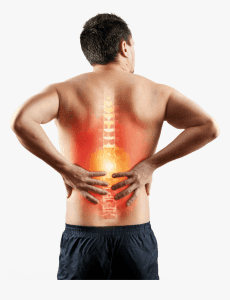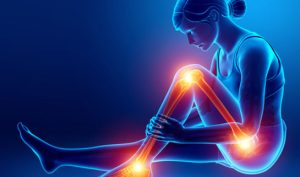Chronic Pain
Painmed offers the best chronic pain treatments. A chronic pain condition is one that lasts more than three months or longer than expected. There are receptor nerve cells beneath the skin and in organs throughout the body that cause pain. In the case of sickness, injury, or other problems, these receptor cells send messages along nerve pathways to the spinal cord, which then transmits the message to the brain. These messages are reduced or blocked by pain medicines before they reach the brain.
There can be anything from mild discomforts, such as a headache, to excruciating pain, such as chest pain accompanied by a heart attack, or the pain associated with kidney stones. There are different types of pain: acute, which is new, subacute, which lasts for a few weeks or months, and chronic, which lasts for more than three months.
Chronic pain is one of the most costly health problems in the country. Economic consequences of chronic pain include increased medical expenses, lost income, lost productivity, compensation payments, and legal charges. Here are some points to consider:
- One of the most significant health problems is low back pain. The most common cause of activity limitations in adults is back pain.
- The majority of people with advanced cancer suffer from cancer pain.
- Every year, more than 50 million Americans suffer from arthritis pain.
- The U.S. adult population suffers from headaches in millions. Chronic headaches include migraines, cluster headaches, and tension headaches.
- There are also other types of pain disorders, such as neuralgias and neuropathies which affect nerves throughout the body, pain caused by damage to the central nervous system (brain, spinal cord), as well as pain without any physical cause-psychogenic pain.
Pain comes in many forms. What are they?
There are two types of pain:
- Acute pain. It is possible for this pain to be the result of inflammation, tissue damage, injury, illness, or recent surgery. Usually, it lasts less than a week. After the underlying cause is treated or resolved, the pain usually subsides.
- Chronic pain. Persistent pain that lasts for months or even years.
Chronic pain: what is it?
Chronic pain occurs over a long period of time and is associated with a chronic health condition, such as arthritis. Pain specialist explains how chronic pain can come on intermittently or continuously. People with this condition may not be able to work, eat properly, exercise, or enjoy life as a whole. The condition of chronic pain can and should be treated.

What are the causes of chronic pain?
Chronic pain can be caused by a variety of factors. There may have been an illness or injury that you have long since recovered from, but the pain persists. There may also be an ongoing cause of pain, such as arthritis or cancer. It is common for people to suffer chronic pain without any history of injury or illness.
How do you define the “terrible triad?”
When pain interferes with your day-to-day activities and interferes with your work, you may become trapped in a vicious circle. As a result of pain, you may become preoccupied with pain, depressed, and irritable. Often, depression and irritability lead to insomnia and fatigue, which in turn lead to more irritability, depression, and pain. Suffering, sleeplessness, and sadness constitute the “terrible triad.” People may become addicted to drugs or have repeated surgeries in order to end their pain. Often, the situation can be as difficult for the family as it is for the person in pain.
What is the treatment for chronic pain?
There are many aspects of your life that can be affected by chronic pain, and there are specialists pain management in Sydney that can help you. Symptom relief and support are essential components of effective treatment. Pain management often requires a multidisciplinary approach to provide the necessary interventions. Outpatient pain management programs are usually offered. The pain management rehabilitation team consists of a number of skilled professionals, including:
- Doctors of neurology and neurosurgery
- Surgeons and orthopedists
- The anesthesiologist
- A team of oncologists
- A physiatrist
- The nursing profession
- Physiotherapists
- The occupational therapist
- Psychologists and psychiatrists
- Workers in social services
- Managers of cases
- Vocational counselors
In many hospitals, rehab facilities, and pain clinics, there are special pain programs.

Rehabilitation for Chronic pain management
The Chronic pain management rehab program is tailored to meet your needs. Programs will vary depending on the type of pain, disease, or condition. The success of this program depends on the active involvement of you and your family.
Pain management programs aim to restore your maximum level of function and independence, as well as improve your overall quality of life – physically, emotionally, and socially. The use of Chronic pain management techniques can help you reduce your suffering.
A pain management program may include the following to help achieve these goals:
Medical management of chronic pain, including medication management:
- Nonsteroidal anti-inflammatory drugs (NSAIDs), aspirin, and acetaminophen are examples of over-the-counter (OTC) medicines.
- To provide stronger pain relief than aspirin, prescription pain medicines, including opioids, may be needed. It should be noted, however, that these drugs are reserved for severe forms of pain, as they can be abused and can have unpleasant and potentially very dangerous side effects.
- Some people can benefit from prescription antidepressants. Serotonin and norepinephrine, which are naturally produced neurotransmitters, are increased by these medications. In the brain, serotonin plays an important role in pain control.
- Joint problems, such as arthritis, require heat and cold treatments to reduce stiffness and pain
- Massage and whirlpool treatments are among the types of physical and occupational therapy that can be provided
- To prevent further problems, exercise to reduce spasticity, joint contractures, joint inflammation, spinal alignment issues, or muscle weakening and shrinkage
- To provide pain relief, local electrical stimulation involves applying brief pulses of electricity to nerve endings under the skin
- The use of injection therapies, such as epidural steroid injections
- Pain management may include emotional and psychological support, such as:
- Group therapy and psychotherapy
- Management of stress
- Training in relaxation
- The practice of meditation
- The practice of hypnosis
- A biofeedback system
- Changes in behavior
It is the belief that you can control pain on your own that unites all of these psychological approaches. You can change your attitudes, your perception of being a victim, your feelings and behaviors associated with pain, or understand how unconscious forces and past events have contributed to your pain.
- Counseling and education for patients and their families
- As appropriate, alternative medicine and therapy treatments
Treatment may also include:
- Surgical procedures. Chronic pain may require surgery. While surgery can relieve pain, it can also destroy other sensations, or even cause new pain. There is no guarantee that relief will last, and pain may return at any time. Pain can be relieved by a variety of operations. For more information, consult your doctor.
- The practice of acupuncture. Acupuncture is a 2000-year-old Chinese technique that involves inserting fine needles under the skin at specific points on the body, and it has shown some promise in treating chronic pain. The practitioner manipulates needles to relieve pain.
Questions and Answers
How do I know if I have chronic pain?
When the cause is treated, acute pain disappears. The term chronic pain refers to pain that does not go away and occurs most days of the week for at least 3 months. There may be no explanation for the pain after tests and investigations. Chronic pain is not unreal, however. It is possible that the nervous system, which sends pain signals, has become oversensitive. As a result of the pain, however it began, it has become an ongoing issue.
Chronic pain: how common is it?
Chronic pain affects about 1 in 5 Australian adults. According to reports, it affects more adults than diabetes, hypertension, or asthma combined. Sport-related injuries, car accidents, and accidents at home or at work are the leading causes of chronic pain.
In chronic pain patients, the most common areas of pain are the back, leg, shoulder, arm, and neck. In women, chronic pain is slightly more common than in men, and it becomes more prevalent with age.
How can I manage my pain?
There are many different factors that affect an individual’s experience of pain, making it a common and complex condition. To manage your pain and minimize flare-ups, you can do a few things. Here are some tips for self-management of pain.
Pain that has lasted longer than expected should be addressed by your doctor or referred to our Pain Directory.
Is there a new treatment I can try?
It is important to discuss specific treatment options with your doctor or health professional regarding your particular condition. Research has shown that there are many ways to reduce the over-protectiveness or sensitization of the nervous system, which in turn can reduce pain intensity.
All I’ve tried hasn’t worked, I’m hopeless!
In order to manage pain, it is important to address emotions. Most people are unaware that multidisciplinary pain management is the most effective way to manage chronic pain. It has been shown that people who take this approach have less disability, feel less pain, and have a higher quality of life.
